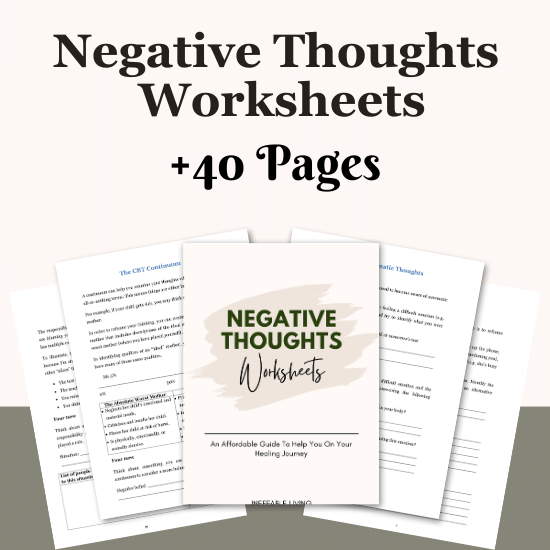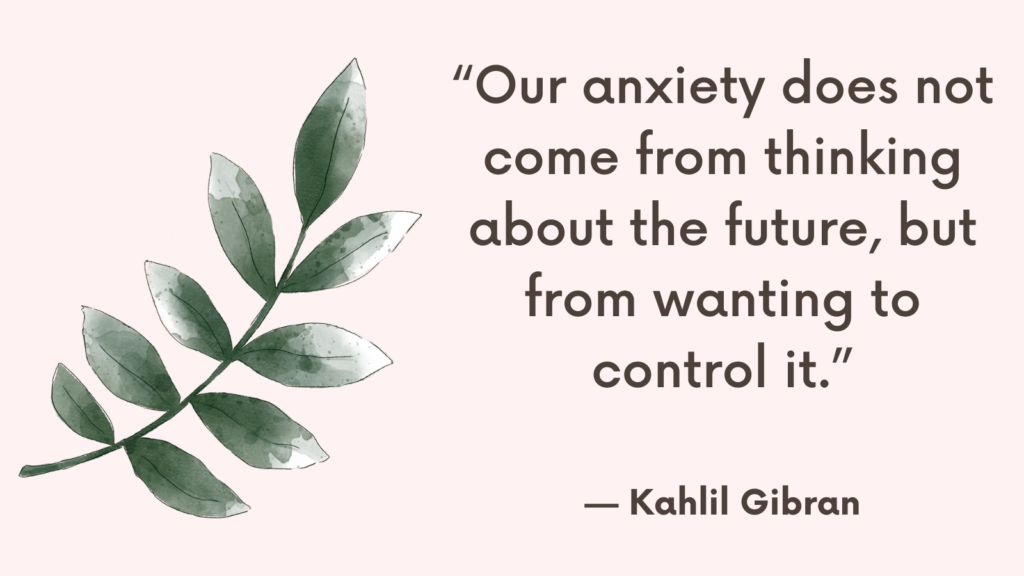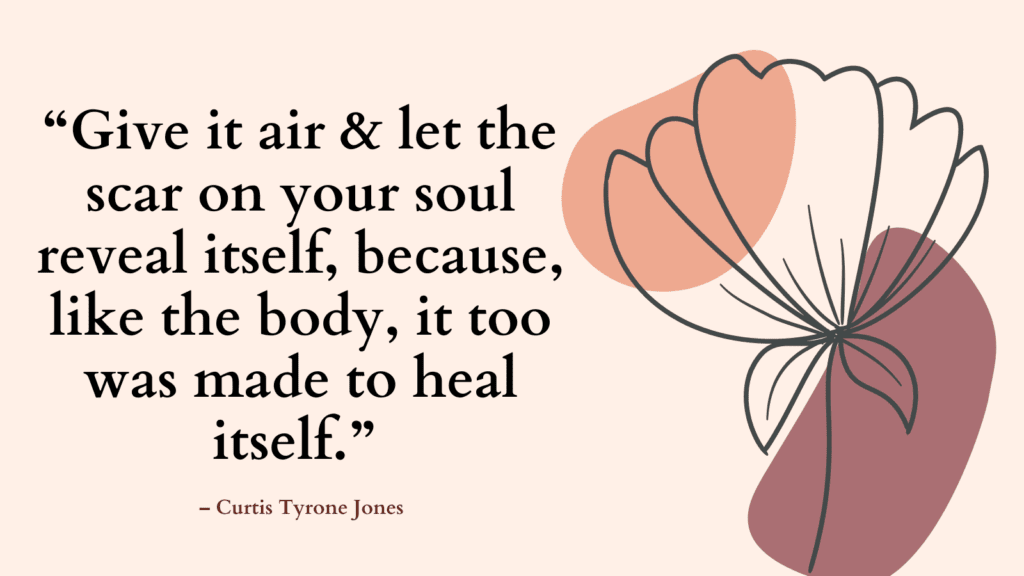Overthinking is a common issue that many people struggle with, leading to anxiety and stress.
The mind becomes a whirlwind of thoughts, often negative, that can interfere with daily life and happiness.
This blog post will explore how to stop overthinking by mastering the ACT (Acceptance and Commitment Therapy) skill of cognitive defusion.
What Is Cognitive Defusion?
Cognitive defusion is a technique used in ACT to help people separate themselves from their thoughts.
Instead of getting entangled in thoughts and believing them to be true, cognitive defusion encourages us to see thoughts for what they are: just thoughts.
This technique helps reduce the power of negative thinking patterns and allows us to focus on what truly matters in life.
How Cognitive Defusion Helps
Cognitive defusion helps us break free from overthinking by changing our relationship with our thoughts.
Instead of trying to force negative thoughts out of our minds or battling them with positive thinking, cognitive defusion teaches us to observe our thoughts without judgment and recognize them as separate from our identity.
The Observer Self Exercise
One effective exercise to practice cognitive defusion is the Observer Self exercise. Here’s how to do it:
1. Close Your Eyes: Find a quiet place, sit comfortably, and close your eyes.
2. Notice Your Thoughts: Begin to notice your thoughts as they come and go. Don’t try to change or judge them; just observe them.
3. Label Your Thoughts: As each thought crosses your mind, label it as thinking. For example, if you think about laundry, acknowledge it by saying, “I’m thinking about laundry.”
4. Shift Perspective: Imagine you’re sitting in a cinema watching your thoughts on a screen. Your thoughts are the movie, and you are the audience. Remember, movies come and go, but the audience remains.
5. Notice Bodily Sensations: Shift your focus away from your thoughts and notice your bodily sensations. Feel the weight of your body on the chair, the sensation of air entering and leaving your nostrils.
6. Recognize the Observer: Remind yourself that you are the one observing these thoughts and sensations. You are not your thoughts; you are the observer of these thoughts.
Practicing this exercise regularly helps you create a mental distance between yourself and your thoughts, reducing their impact on your emotions and behavior.
Metaphors for Cognitive Defusion
ACT uses various metaphors to illustrate cognitive defusion:
1. Leaves on a Stream: Imagine your thoughts as leaves floating down a stream. You watch them pass by without trying to stop or change them.
2. Passengers on a Bus: Picture yourself as the driver of a bus, with your thoughts and feelings as passengers. They might be loud or demanding, but you remain in control of where the bus goes.
3. Clouds in the Sky: Visualize your thoughts as clouds drifting across the sky. They come and go, and you observe them without getting attached.
4. Radio Playing in the Background: Think of your mind as a radio, constantly playing in the background. You can hear it, but you don’t have to pay attention to everything it says.
5. Thanking Your Mind: When a negative or unhelpful thought arises, you can say, “Thank you, mind, for that thought.” This creates distance and reduces the power of the thought.
6. Chessboard: Imagine your thoughts and feelings as pieces on a chessboard. You are the board itself, allowing the pieces to move around without being affected by them.
7. Tug-of-War with a Monster: Envision a tug-of-war with a monster representing your negative thoughts. Instead of continuing the struggle, you drop the rope, removing the power the monster has over you.
8. Thoughts as Stories: See your thoughts as stories or scripts your mind is telling you. You can acknowledge them without believing in their narrative.
9. Words on a Screen: Picture your thoughts as words appearing on a computer screen. You can read them, but you don’t have to react to them.
Related: How To Stop Self-Critical Thoughts Using These Top 10 Techniques
Practical Techniques for Cognitive Defusion
Here are some practical techniques to practice cognitive defusion:
1. Humor
Humor is a powerful tool for cognitive defusion.
If you’re having a negative thought, try saying it in a silly voice or imagine it as a cartoon character.
This helps you see the thought as less threatening and more manageable.
2. Writing Down Thoughts
Writing down your thoughts can be a helpful way to distance yourself from them.
Title the page “Stuff My Mind Is Making Up” or “I’m Having the Thought That…” and make a list of your thoughts.
This practice helps you see your thoughts objectively.
Related: Impulsive vs Intrusive Thoughts (& How to Manage Them)
3. Labeling Thoughts as Stories
In marriage therapy, we often label thoughts as stories.
Instead of saying, “My husband never helps around the house,” you might say, “I’m telling the story that I’m always a victim here.”
Recognizing thoughts as stories helps you see them as interpretations rather than facts.
4. Using a Silly Voice or Song
Another technique is to sing your negative thoughts in a ridiculous way.
For example, if you’re thinking, “I’m a loser,” sing it to the tune of “Happy Birthday.”
This makes the thought seem less significant and more humorous.
Related: Why Do Intrusive Thoughts Feel So Real? Top 4 Reasons
The Goal of Cognitive Defusion
The goal of cognitive defusion is to create space between yourself and your thoughts so you can focus on what truly matters.
When you’re not entangled in your thoughts, you’re free to be present and engaged with the people and activities you care about.

Conclusion
Cognitive defusion is a skill that takes practice.
It’s not about getting rid of your thoughts or never getting caught up in them again.
It’s about learning to observe them with curiosity and openness.
Remember, you can’t push the rope. You can’t force your brain to stop overthinking. But you can gently pull the rope, shift your attention, and gain more influence over your life by learning to observe your thoughts without judgment.
By practicing cognitive defusion, you can stop overthinking and start living a more present and fulfilling life.



